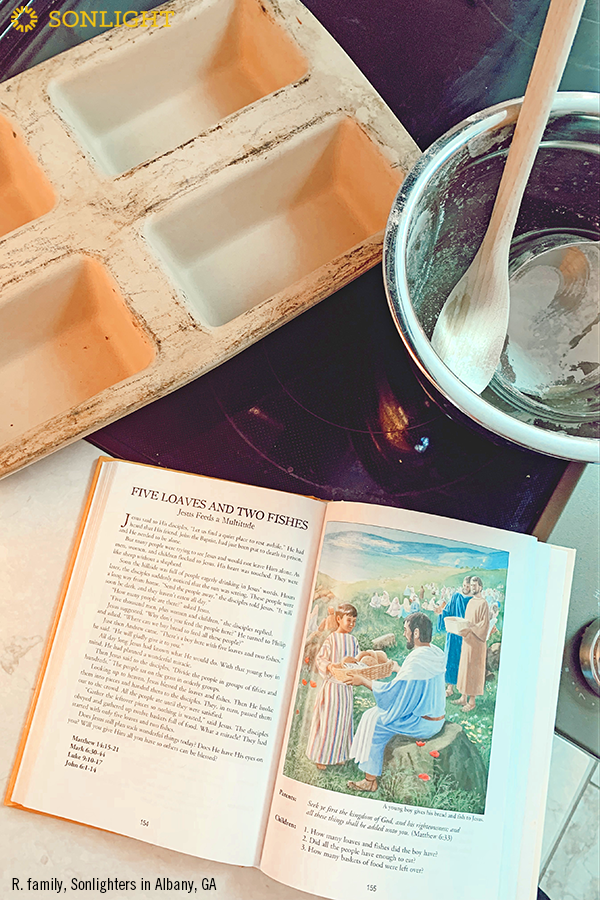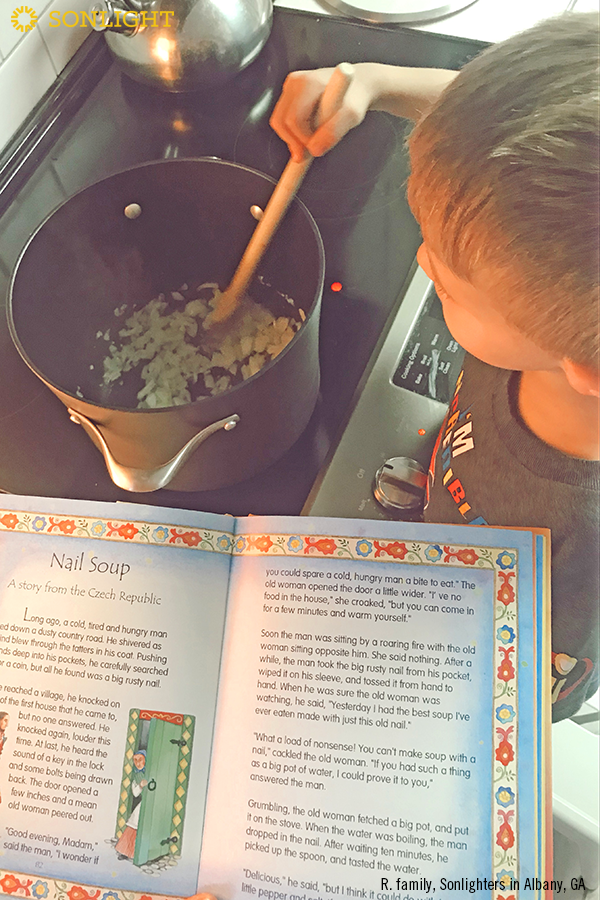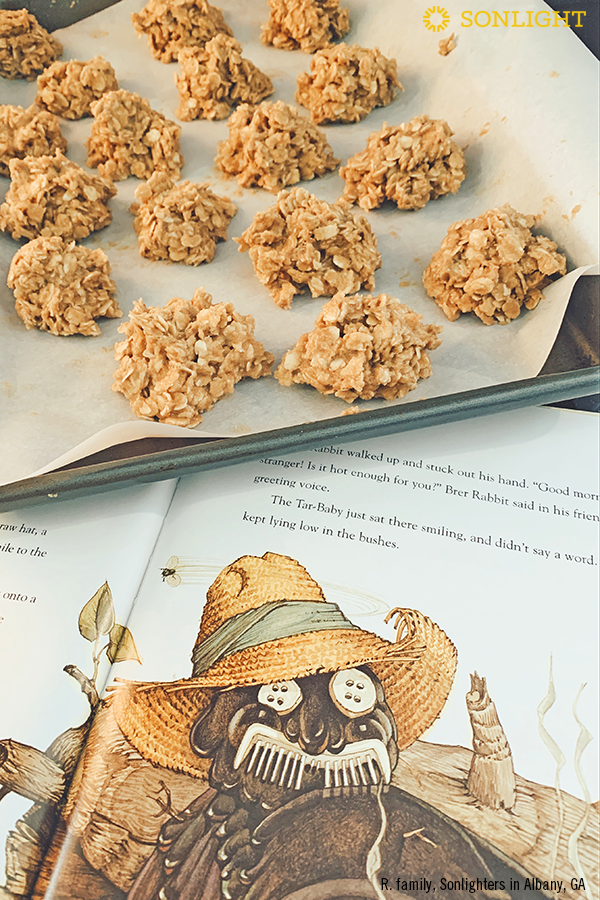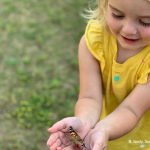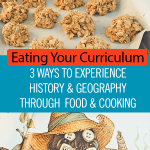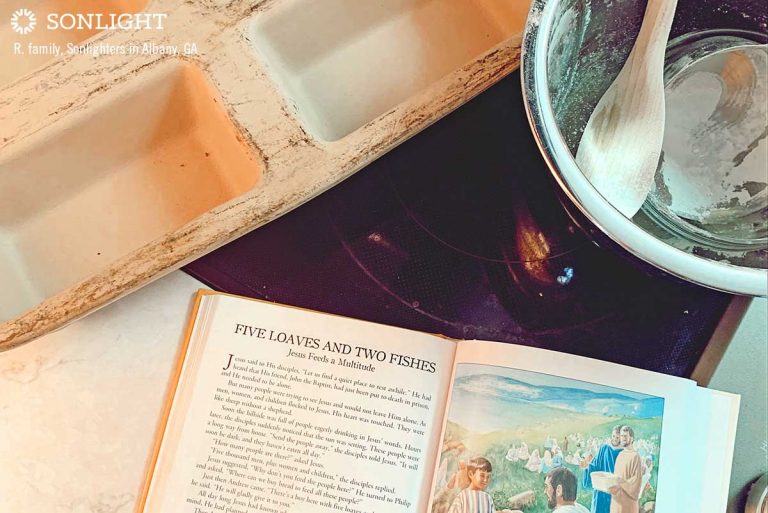
Lots of homeschooling families find that the dining table is an integral part of their learning experience.
- In many homes you’ll see a kitchen table covered with Instructor’s Guides, great literature, and math books for the bulk of the day.
- Other families do most of their work elsewhere in the home, but find that having everyone gathered around the table for a meal is a convenient time to practice spelling words, talk about science concepts learned earlier in the day, or go through another chapter in the current Read-Aloud.
- Meal prep itself is a perfect opportunity to use measuring, fractions, and basic math facts before setting out plates and silverware.
Those approaches are all practical and good, but sometimes it’s fun to make the food itself part of the history or geography curriculum.
1. Foreign Food Night
Several years ago our family used the Create-A-Calendar from HBL A as inspiration for what we dubbed Foreign Food Night. Once a month we prepared a dinner comprised entirely of food from whichever country the calendar was highlighting that particular month. In a season with multiple little kids and no older ones, I chose the convenience of looking recipes up online. If I had it to do over, I’d opt to use the library system as a resource for cookbooks to peruse with my young kids as we created a menu together.
In the years of Intro to World History (HBL B and HBL C) , Eastern Hemisphere (HBL F), and World History (HBL G and HBL H), you can keep things simple by choosing to eat food from the setting of your current Reader or Read-Aloud. The Pre-K program is filled with options for cooking as Brittany R from Albany, GA shows in her photos below.
About the Photos from Brittany R. in Albany, GA
- Baking bread in a bag was a fun activity to do after reading Jesus Feeds a Multitude (Pre-K). Reading this story and baking the bread also lead to some sweet conversations about how Jesus is the Bread of Life!
- Reading Nail Soup from Stories From Around the World (Pre-K) inspired us to make some yummy nail soup for dinner! We love bringing stories to life through cooking and baking!
- The Classic Tales of Brer Rabbit (Pre-K) was a favorite! Thanks to the creative idea listed in the teacher's manual, we loved making these Tar Baby cookies!
2. Foods from the 50 States
If you’re working through Intro to American History (HBL D and HBL E) or American History (HBL 100), you can go on a culinary road trip across the nation.
The route you take doesn’t matter:
- go alphabetically
- move from one side of the country to the other
- work in order of when the states were formed or joined the Union
A quick online search of state recipes or (insert state of choice) recipes will give you endless options of foods to try, so you won’t have any trouble finding dishes or an entire meal that appeals to you.
If you want to add a little emphasis to the geography aspect of eating state foods, print out a map of the United States and have your kids color in the states as you cook meals from them.
3. A Restaurant Experience
Maybe you’d rather be served a meal than to prepare it yourself. If that’s the case, find a local restaurant that serves food from the state or country your family is learning about and stop in for a meal. If your budget and location allow, you could make these restaurant meals a monthly field trip.
Stretch your restaurant field trip dollars by
- using deal sites like Groupon
- ordering just one dish instead of an entire meal
- eating at lunch instead of dinner
Perhaps you live in a more rural location without diverse restaurant options or your budget simply doesn’t have the wiggle room for dining out on a regular basis. In that case, you’ll need probably need to stick with cooking your own curriculum-based meals, which is totally fine. Maybe you can do your shopping in an international market which is a great learning experience in itself!
Eating Your Curriculum
Incorporating meals from the places talked about in school books brings a tangible—and often delicious—quality to what’s being studied. At the very least, you’ll have a better understanding of cultural geography. And it's possible your family may end up with new favorites to add to your regular meal rotation.
If hands-on activities are the way to your child's heart and mind, we've got outstanding projects in easy-to-use kits, complete with supplies, clear directions, and short passages to provide historical context.


